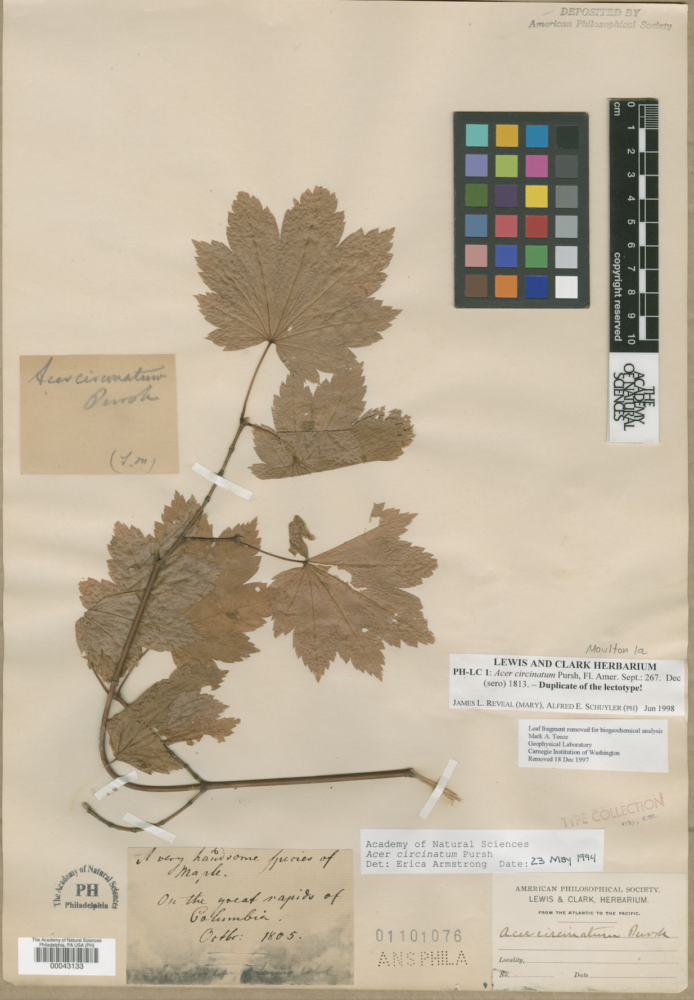
What a Philly Museum’s behind-the-scenes collections reveal about Climate Change
The Academy of Natural Sciences may be closed to the public. But one collection the public never sees holds a piece of history with an interesting connection to climate change.
In a corner inaccessible to the public, plant samples are tucked away in white file cabinets, with plant sketches nearby.
Jordan Teisher, Collection Manager of the Botany department, minds the Lewis and Clark herbarium: a collection of 227 plants that the explorers collected on their western expedition. Prior to the 1800s, there was little documentation about plant species.
Teisher pulls out a file showing a two-hundred-year-old maple leaf pressed to the paper, and in another folder, a tobacco plant is accompanied by a story from the botanist.

“This was a specimen of the Arikaras tobacco, [which was] taken the 12th of October, 1804. It was given to [Lewis and Clark] from the chief of the Arikara tribe.”
After sitting in a cabinet for almost two hundred years, the collected tobacco was given a new exploration. In 1995, scientists studied and dissected the tobacco’s carbon isotope ratios; their mission was to study and measure climate change.
By studying carbon isotopes, scientists can measure how much carbon in our atmosphere today came from fossil fuels.
Carbon isotope ratios reveal the amount of carbon dioxide absorbed from the atmosphere. When taking a small piece of the tobacco plant, Teisher says that scientists found that “organic signature of that isotope ratio.”
The next step would be to compare the tobacco’s isotope ratio to the current carbon amount in the same species to determine change.
While scientists had gained isotope ratios from the tobacco plant, Teisher says that this isn’t the best way to measure CO2 since there’s too much “noise” in plant isotopes. Scientists have since discovered better methods such as measuring isotope ratios from ice sores and tree rings.
Teisher suggests that climate change can affect the growth areas of plants.

“You can use records like this to say, ‘No, they haven’t always been there. They were somewhere else. They were farther away or more widespread.’”
Although there hasn’t been studies on the difference in plant locations yet, there’s still the possibility of gaining knowledge by traveling back to the areas where Lewis and Clark collected the plants.
Lewis, the main documenter of plants on the exploration, tracked the date of the collection, the animals that fed on the plant, and the specific location where they gathered.
“You can find the date of [Lewis’s] journal entry, and find the journal entry from all the other people who were taking detailed notes on the expedition, and then compare it with Lewis’s or with Clark’s very detailed maps. [Then] we can get a really precise location for where that specimen was collected.”
According to Teisher, such detailed information gives scientists the plant’s flowering times and ecological data about animals living nearby.
“It’s very precise. Geographic data and all that stuff is really important in trying to tie things into historic records for climate change.”









